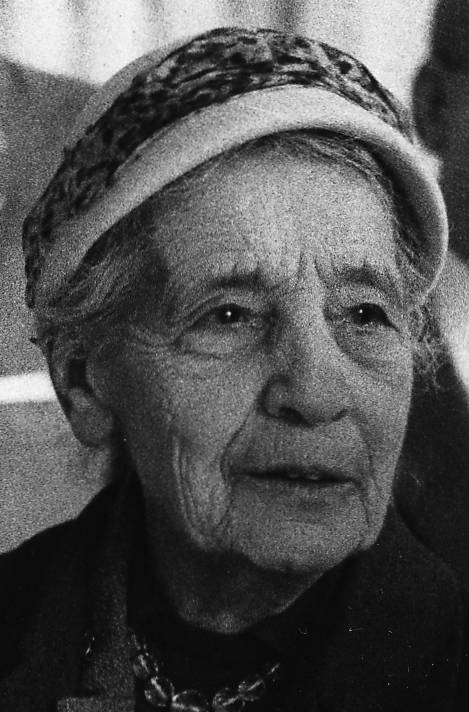
FAQ About Lise Meitner

Who was Lise Meitner?
Lise Meitner was an Austrian-Swedish physicist who was instrumental in the discovery of nuclear fission. Born on November 7, 1878, in Vienna, Austria, she contributed significantly to the fields of radioactivity and nuclear physics. Despite facing gender discrimination in her career, Meitner made groundbreaking scientific advancements, particularly in collaboration with Otto Hahn.

What is Lise Meitner most known for?
Lise Meitner is most renowned for her role in the discovery of nuclear fission. Alongside chemist Otto Hahn, she explored the processes by which atomic nuclei split apart, laying the groundwork for this transformative scientific discovery. Her insights helped explain the theoretical aspects of the fission process.

How did Lise Meitner contribute to the discovery of nuclear fission?
In 1938, while collaborating with Otto Hahn, Lise Meitner interpreted experimental results that demonstrated the splitting of uranium atoms when bombarded with neutrons. Her theoretical explanation, published with her nephew Otto Frisch, introduced the term "nuclear fission" and elucidated its principles.

What challenges did Lise Meitner face in her scientific career?
Lise Meitner faced significant obstacles as a female scientist, including gender bias and lack of recognition. Her career was also disrupted by the rise of the Nazi regime; as a Jewish woman, she was forced to flee Germany in 1938. Despite these challenges, she continued her research in Sweden.

Did Lise Meitner receive a Nobel Prize?
No, Lise Meitner did not receive a Nobel Prize. Despite her critical role in the discovery of nuclear fission, the 1944 Nobel Prize in Chemistry was awarded solely to Otto Hahn. Meitner's contributions were overlooked by the Nobel committee, a decision that remains controversial.

Which institutions did Lise Meitner work with during her career?
Lise Meitner worked with several prestigious institutions. She began her career at the University of Vienna, later moved to the University of Berlin, and eventually continued her work at the Manne Siegbahn Institute (now part of Stockholm University) after escaping Nazi Germany.

How did Lise Meitner escape Nazi Germany?
Lise Meitner fled Nazi Germany in July 1938 with the help of colleagues and friends who recognized the imminent danger she faced due to her Jewish heritage. She moved to Sweden where she secured a position at the Manne Siegbahn Institute, continuing her scientific research there.

What was Lise Meitner's role in the Manhattan Project?
Although Lise Meitner's research on nuclear fission was foundational to the development of nuclear weapons, she did not participate in the Manhattan Project. Meitner was opposed to the use of nuclear fission for destructive purposes and continued working only for peaceful applications of nuclear energy.

How did Lise Meitner's work impact the scientific community?
Lise Meitner's research significantly advanced the understanding of atomic physics and nuclear chemistry. Her work on nuclear fission paved the way for advances in both energy production and medicine, influencing generations of scientists and altering the course of history.

What is one of Lise Meitner's most cited publications?
One of Lise Meitner's most cited works is the paper "Disintegration of Uranium by Neutrons: A New Type of Nuclear Reaction" which she co-authored with her nephew Otto Frisch. This publication laid down the theoretical groundwork for the concept of nuclear fission.

Was Lise Meitner recognized for her contributions during her lifetime?
While Lise Meitner did not receive a Nobel Prize, she was honored with numerous awards during her lifetime. These included the Max Planck Medal, the Enrico Fermi Award, and the naming of chemical element 109, meitnerium, in her honor. Her scientific legacy remains highly regarded.

What legacy did Lise Meitner leave behind?
Lise Meitner's legacy is profound, characterized by her pioneering research in nuclear physics and her moral stance against nuclear weapons. As a testament to her contributions, element 109 in the periodic table was named meitnerium in 1997, recognizing her impact on science.

Where did Lise Meitner study physics?
Lise Meitner studied physics at the University of Vienna, where she attended lectures by prominent physicists like Ludwig Boltzmann. She completed her doctoral degree in 1906, becoming one of the first women in Austria to earn a doctorate in physics.

What recognition did Lise Meitner receive after her death?
After her passing in 1968, Lise Meitner's scientific achievements have been widely celebrated. Element 109, meitnerium, was named in her honor in 1997. Her story and contributions are frequently highlighted in scientific literature and history as a beacon of perseverance in science.

How did Lise Meitner's collaboration with Otto Hahn begin?
Lise Meitner's collaboration with Otto Hahn began after she joined the Kaiser Wilhelm Institute for Chemistry in Berlin in 1907. Their partnership was highly productive, lasting over 30 years, and leading to significant breakthroughs in nuclear chemistry and physics.

What personal qualities helped Lise Meitner succeed in science?
Lise Meitner was known for her determination, intellectual rigor, and resilience. Her passion for physics and commitment to scientific inquiry enabled her to overcome significant societal and professional obstacles, making lasting contributions to her field.

Why is Lise Meitner considered a pioneer among women in science?
Lise Meitner is considered a pioneer among women in science for her remarkable achievements despite gender discrimination. She was one of the few women of her time to obtain a doctorate in physics and make influential contributions to a traditionally male-dominated field.

What was Lise Meitner's scientific approach or philosophy?
Lise Meitner's scientific philosophy emphasized thorough experimentation, detailed theoretical analysis, and ethical responsibility. She believed in the peaceful application of nuclear energy and was committed to advancing science with integrity and caution.

How is Lise Meitner remembered in popular culture?
Lise Meitner has been depicted in various biographies, documentaries, and films that highlight her scientific achievements and the personal challenges she faced. Her story serves as an inspirational example of resilience and dedication to scientific progress.

What awards did Lise Meitner receive for her work?
Throughout her career, Lise Meitner received several prestigious awards and honors, including the Max Planck Medal, the Enrico Fermi Award, and election to the Royal Swedish Academy of Sciences. These accolades reflect her significant contributions to physics and chemistry.
